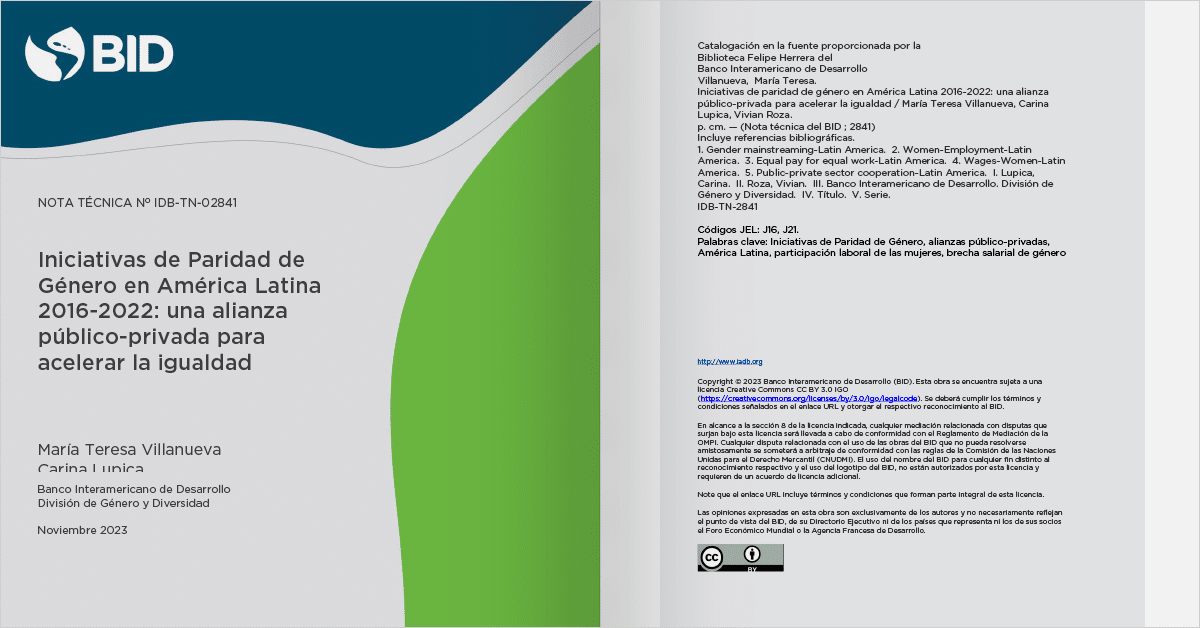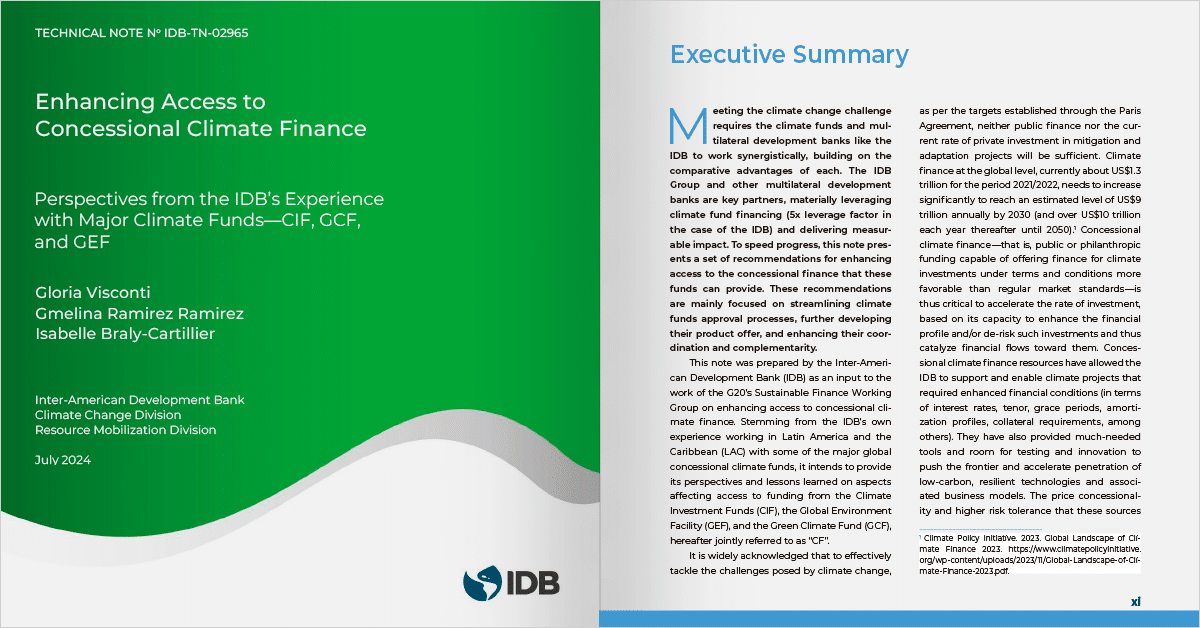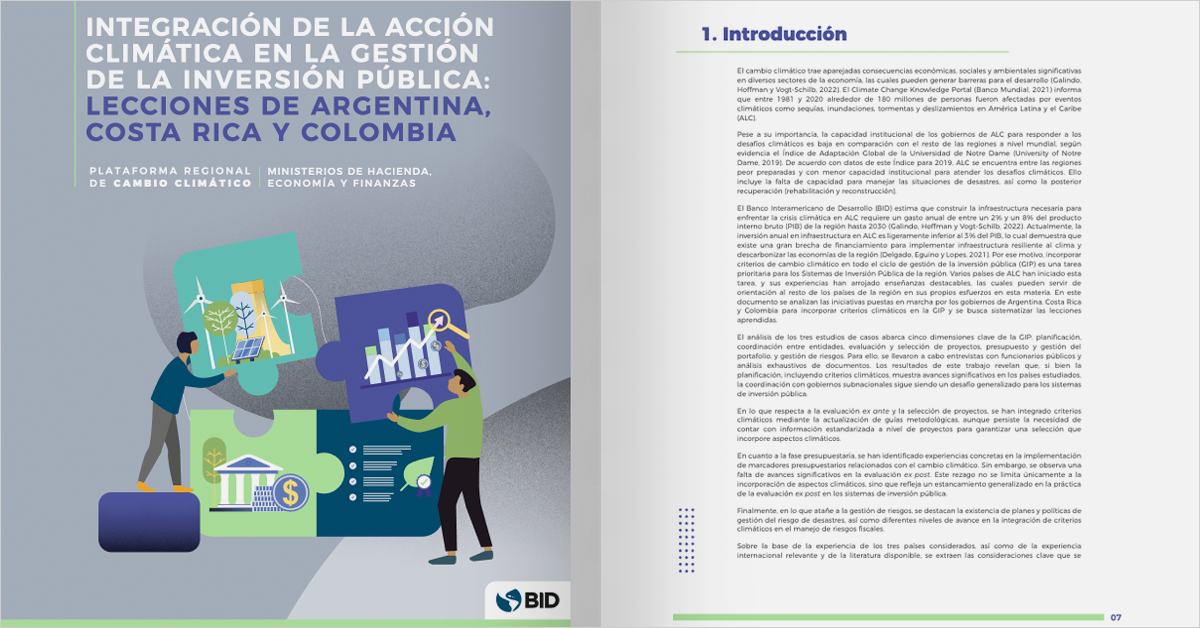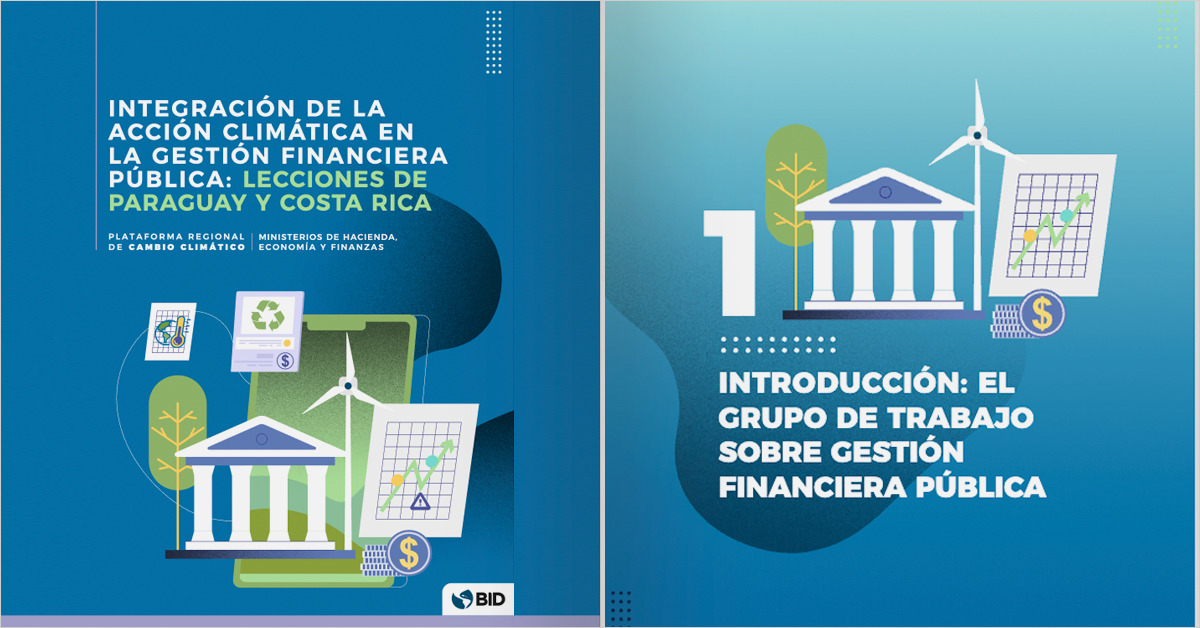- Home
- »
- Publications
- »
- Gender Parity Initiatives in Latin America 2016-2022: a public-private alliance to accelerate equality

Editor/s: IDB
Author/s: Villanueva, María Teresa; Lupica, Carina; Roza, Vivian
File: Download PDF
The Inter-American Development Bank (IDB) has published a new document that addresses Gender Parity Initiatives (GPI) in the Latin American region in recent years. The first chapter describes the roadmap for the development of GPIs, consisting of six main milestones: i) formation of a Leadership Group; ii) activation of the Technical Group and other support figures that supervise the initiative implementation; iii) diagnosis elaboration to characterize the economic gender gaps in the country; iv) development of an Action Plan with concrete and measurable actions to close economic gender gaps; v) launch of the GPI; and vi) implementation, monitoring and sustainability of specific actions to comply with the Action Plan.
The second chapter details the GPIs that the Inter-American Development Bank (IDB), in collaboration with the Forum and the French Development Agency (AFD), has implemented since year 2016, in countries such as Chile, Panama, Argentina, Costa Rica, Colombia, Dominican Republic, Ecuador, Mexico and Honduras.
The authors conclude that GPIs have proven to be an effective tool to support countries in their work in favor of gender equality, they have managed to promote changes in public policies and legislation, encouraged private sector companies’ commitment to close their gender gaps and support the incorporation and progress of women in non-traditional sectors. Key benefits of GPIs include: i) gather top-level leaders to collaborate in closing economic gender gaps; ii) involve the Treasury, Finance and Production sectors in dialogues about the importance and benefits of closing gender gaps for the country development and growth; and iii) collect and articulate existing initiatives from the public sector and promote new regulations and projects to close economic gaps that affect women.





 Stay updated on the latest trends of Green Finance
Stay updated on the latest trends of Green Finance




